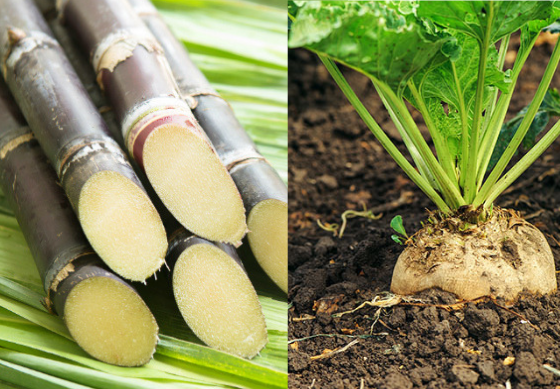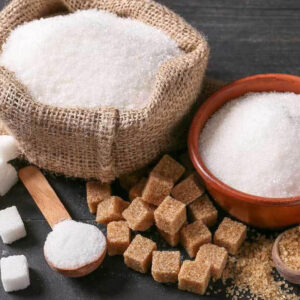Checking Out the Distinctions in Usages and Advantages Between Beet Sugar Vs Cane Sugar
In the culinary globe, the choice in between beet sugar and cane sugar is not just about sweetness yet involves a nuanced consideration of taste, application, and impact. While both sugars stem from different plants, each goes through special manufacturing processes that subtly affect their features and suitability for different recipes.
Beginnings and Production Processes of Beet and Cane Sugar

Cane sugar, on the various other hand, comes from the sugarcane plant, an exotic yard belonging to Southeast Asia today grown in tropical zones worldwide. The production of cane sugar begins with the harvesting of cane stalks, which are squashed to launch the juice. This juice is then boiled to concentrate it, after which it is rotated in centrifuges to generate raw sugar crystals. These crystals are further refined to create the white sugar generally readily available in stores.

Nutritional Material and Wellness Considerations

When comparing the dietary material of beet sugar and cane sugar, it becomes apparent that both kinds basically provide the exact same caloric worths, with around 16 calories per tsp and no considerable nutrient variety. Each is made up virtually entirely of sucrose, which is an easy carbohydrate that provides fast energy however does not have vitamins, minerals, or fiber. This resemblance extends to their effect on health and wellness, specifically worrying blood sugar levels. Both sugars, when consumed over, can add to raised blood glucose levels, a risk element for diabetic issues and various other metabolic conditions. In addition, too much consumption can bring about weight gain and dental problems, as both sugars are equally cariogenic, promoting tooth decay. From a health and wellness point of view, moderating intake of any type of sugar, whether from beet or cane, is a good idea to prevent these prospective negative effects on find out here well-being. Hence, neither holds a distinct benefit over the various other in regards to wellness benefits.
Flavor Accounts and Culinary Applications
In spite of their comparable chemical frameworks, beet sugar and cane sugar differ subtly in flavor, which can influence their usage in numerous cooking contexts. Cane sugar commonly lugs a tip of molasses, even in its refined type, providing a cozy, caramel-like touch that boosts baked items, coffee, and chocolate-based recipes. On the other hand, beet sugar is characterized by its highly fine-tuned, neutral taste, making it a flexible sugar that does not modify the taste accounts of recipes.
Ecological Influence and Sustainability
While both beet and cane sugars are stemmed from plants, their environmental impacts differ significantly due to the distinct methods of cultivation and processing required for each. Sugar beet cultivation frequently involves comprehensive mechanization, which can increase fossil fuel intake and carbon exhausts. Beets can be expanded in cooler environments and need much less irrigation, potentially reducing water use contrasted to sugarcane. Sugarcane, on the other hand, is generally grown in exotic areas where it relies greatly on watering and a longer growing period, raising its water impact.
Additionally, the processing of sugarcane usually creates a significant quantity of waste, including bagasse, which, although site web useful as biofuel, often adds to air contamination if burned inefficiently. Sugar beet processing uses even more of the raw materials, causing less waste. Both industries deal with difficulties in lowering their environmental footprints, but continuous advancements in farming methods and waste administration are aiming to enhance sustainability.
Economic Variables Influencing the Sugar Industry
The Continued economic characteristics of the sugar sector are significantly influenced by worldwide market needs and profession policies. Variables such as tolls, subsidies, and international trade arrangements play essential duties fit the competitive landscape. In areas where sugarcane or sugar beet manufacturing is subsidized, manufacturers may have a monetary benefit that enables them to use reduced rates on the international market. This can produce disparities in success and market gain access to for producers in countries without such subsidies.
Additionally, changes in international demand for sugar, influenced by dietary fads and commercial use in food products, directly influence rates and production levels. beet sugar vs cane sugar. Weather likewise play an essential function, as they can considerably affect plant yields and, consequently, the supply chain. This irregularity presents a level of financial unpredictability that can cause investment volatility in sugar production fields, influencing decisions from growing to market technique
Conclusion
In verdict, both beet and cane sugar have special high qualities that suit various cooking requirements. While cane sugar imparts an abundant flavor suitable for enhancing baked items, beet sugar's neutrality is perfect for lighter meals. Nutritional resemblances regardless of, their distinct manufacturing processes and ecological impacts include complexity to the selection between them. Hence, understanding these distinctions helps cooks and consumers make notified choices that line up with their wellness, culinary, and ethical choices.